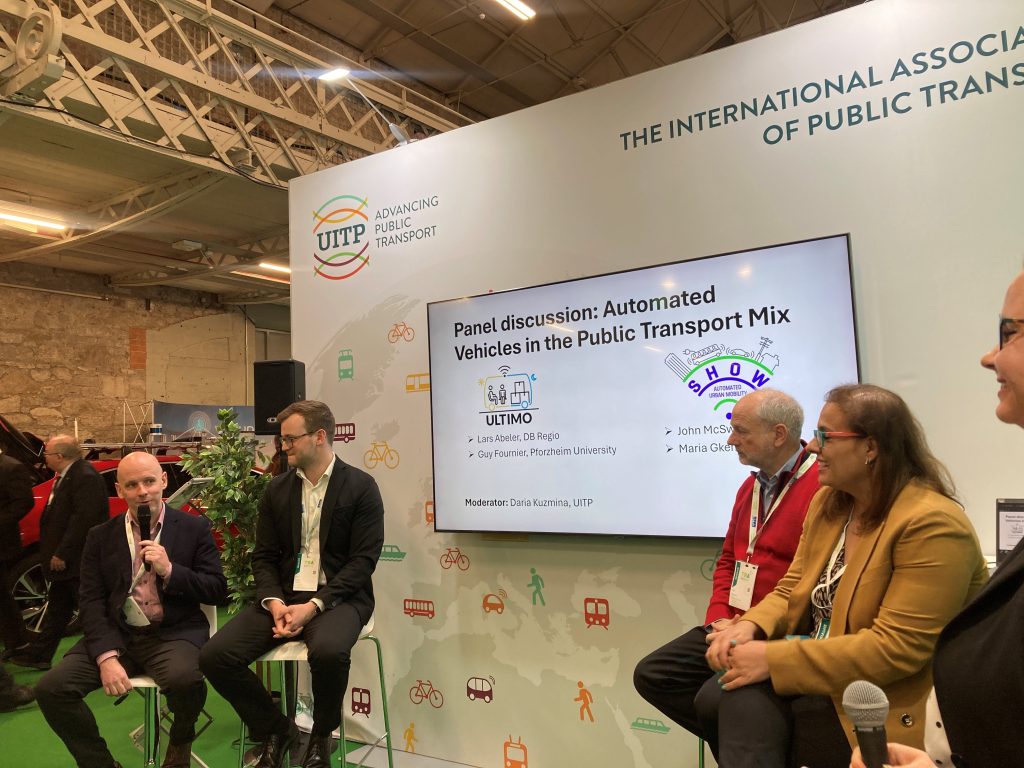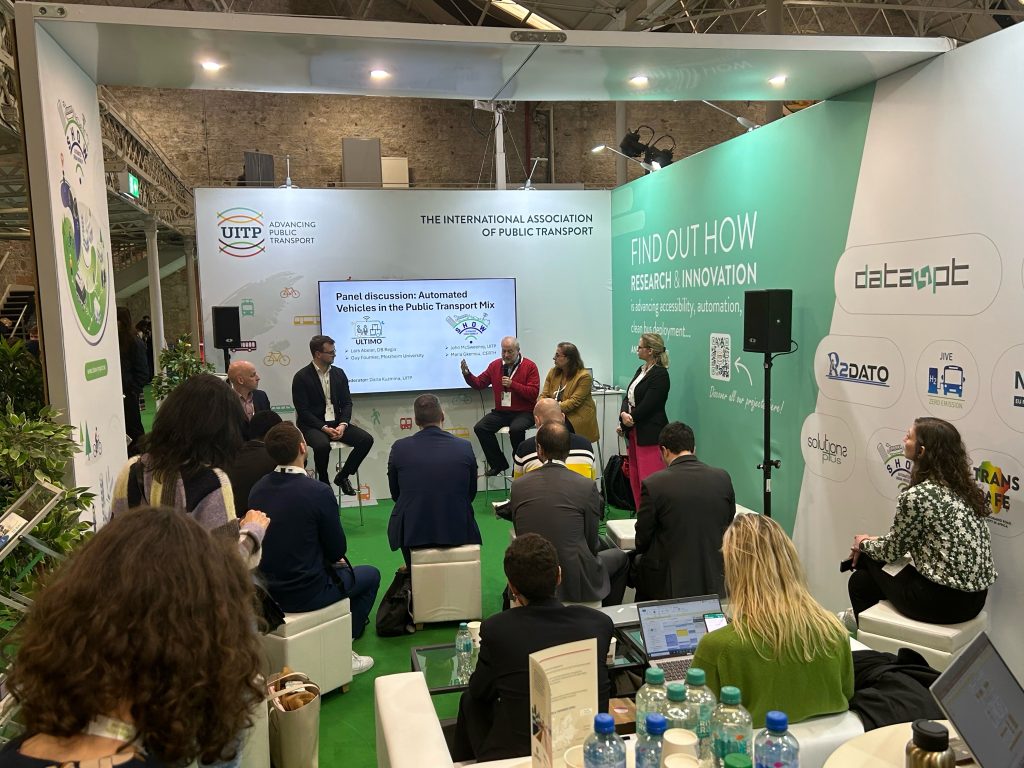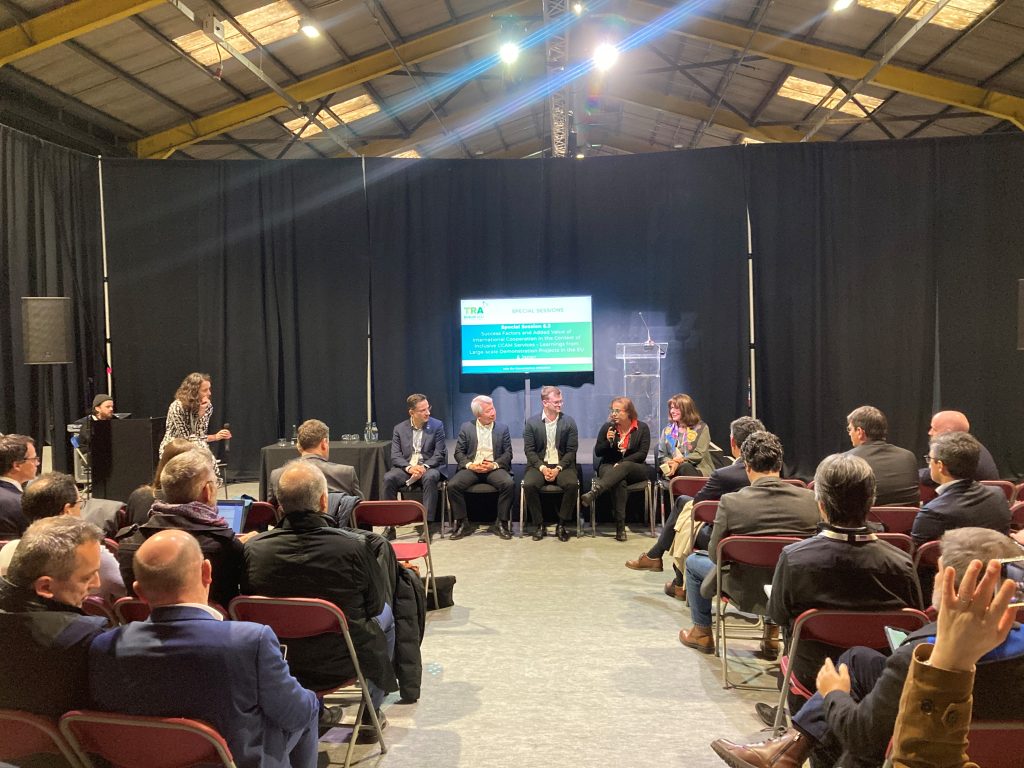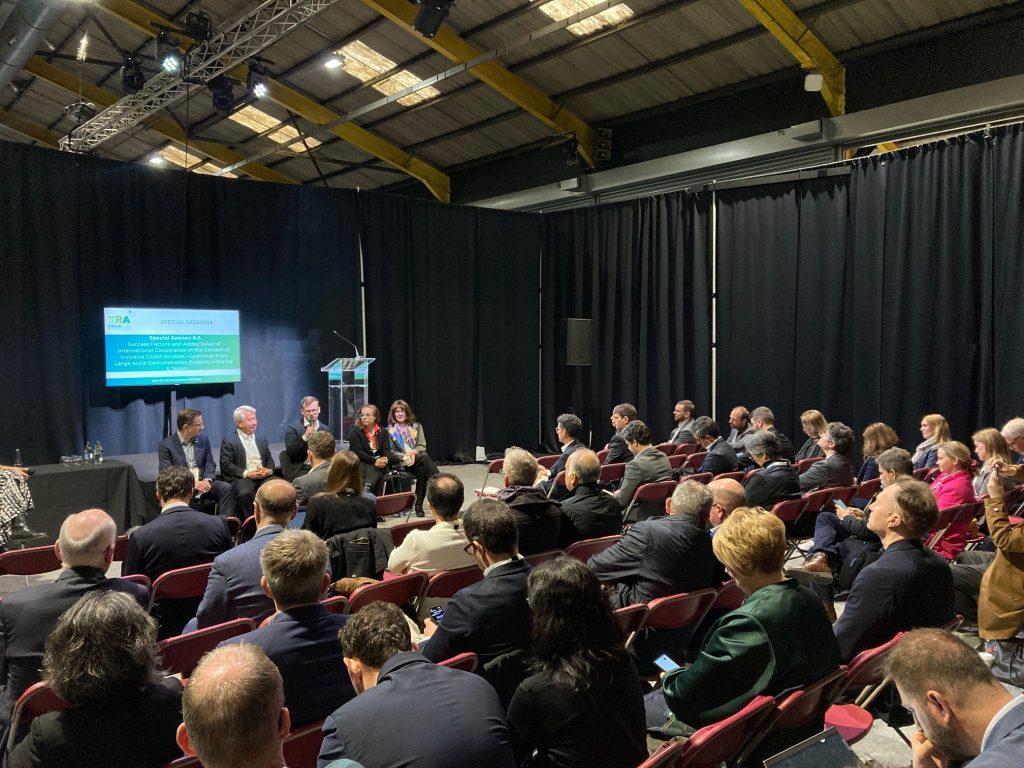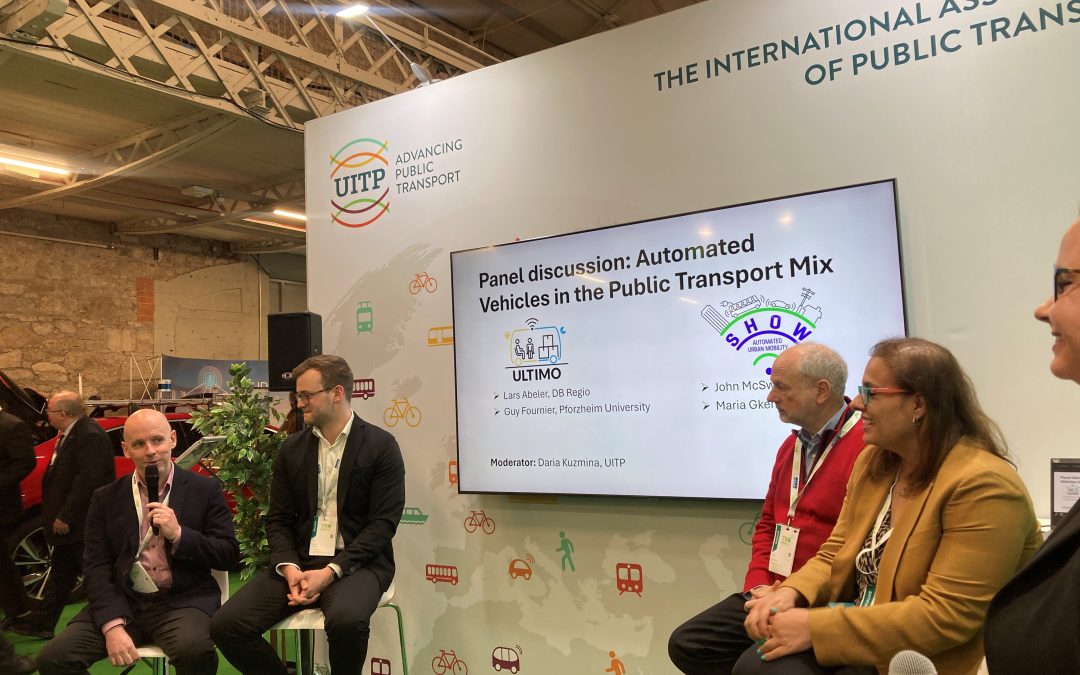
From 14 to 18 April, a SHOW delegation travelled to Dublin for TRA, Europe’s biggest transport research conference. Through multiple conference sessions, presentations and posters, SHOW greatly contributed to discussions around CCAM, leveraging its extensive experiences from the demo sites and sharing knowledge gained during the last years with sector peers.
‘It’s all about services’
The panel session ‘Automated Vehicles in the Public Transport Mix’ was organised jointly with the ULTIMO project and saw project coordinators and technical leaders discuss the state of the art of AVs in public transport, the possibilities for operators and authorities, and where the future lies.
Coordinator John McSweeney of UITP highlighted multiple demo sites, including the first & last mile services in Frankfurt. “In Frankfurt we have seen much success with first mile last mile services. We ran an on-demand service in a neighbourhood that lacked public transport before as buses were not suited for the narrow streets. This service, which ran for example between the medical center and the supermarket, was very popular particularly among the older population. We saw a massive adoption of the service by passengers, simply because it made their lives easier.” McSweeney also highlighted the upcoming rural-to-urban automated service in Crest, and the demo in Madrid. The latter, which is led by EMT Madrid, tests automation of buses in depots e.g. for parking. “This can save a lot of time for bus drivers and enhance operations”, McSweeney stated.
Technical lead Maria Gkemou emphasised the need to have good working services, no matter the technology. “’It’s all about providing services that people want to use. The fact that the shuttle is automated doesn’t matter to most people.” She also touched upon the topic of safety and user perception: “Automation might get criticised, but in the end of the day most mistakes are made by humans. Automated mobility is safer, but the perception that people have of safety is as essential if you want people using your service.”
Gkemou also touched upon the topic of how automation can affect the workforce. “AVs provide more jobs, but different jobs. Within SHOW, we have interviewed many safety drivers, with interesting findings. The job of safety drivers seems to be easier at the beginning, as of course it gets rid of the task of driving. However, it might simply get a bit boring at one point. This can provide a challenge.”
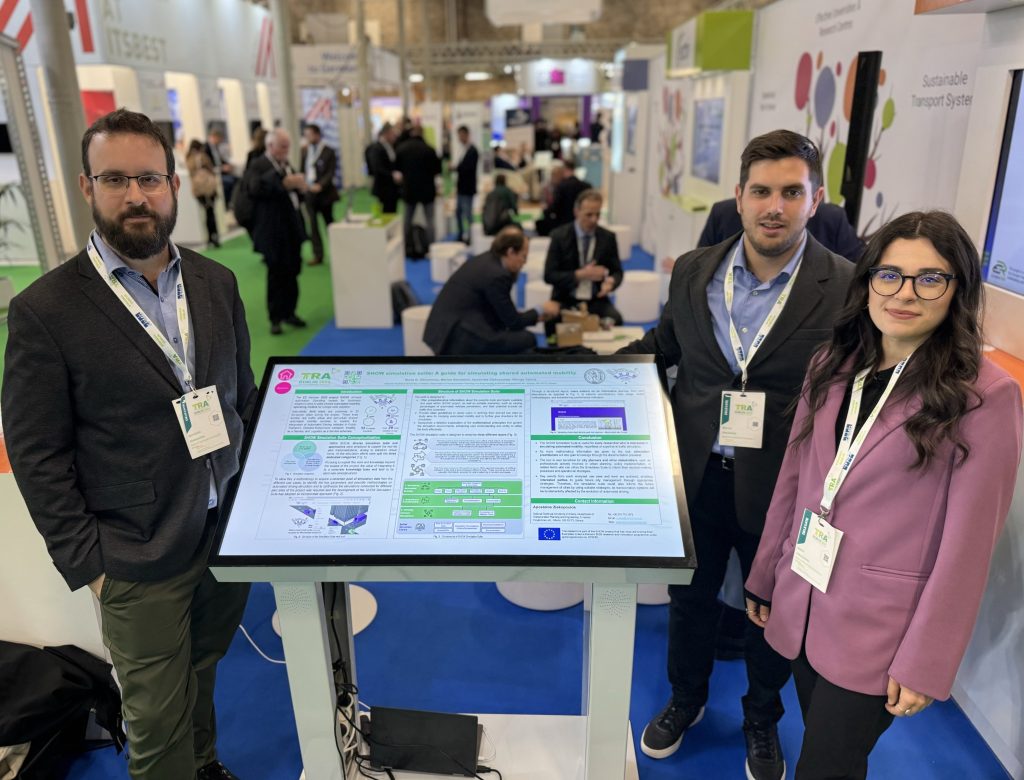
Collaborative research
Of course, the focus at TRA was heavily on research and innovation. SHOW partner NTUA showcased its poster ‘A guide for simulating shared automated mobility’ at the ECTRI research booth and presented its paper “Safety evaluation via conflict classification during automated shuttle bus service operations”. You can read the paper here.
In the session ‘Success Factors and Added Value of International Cooperation in the Context of Inclusive CCAM Services’ it was all about how to leverage international collaboration for R&D and deployment of AVs. The session explored the nuanced realm of automated paratransit services in the context of CCAM and gathered from the EU, Japan and the US.
Jane Lappin, who is a member of the SHOW Advisory Board, touched upon the need for collaboration across the world. “In the EU and the US we share the same goals, we are both working towards a safe, healthy, decarbonanised future. We share the challenge of reporting to our elected officials, and we are all accountable for the public funds that are required to build this ecosystem. When we join forces across borders and we apply the same impact assessment framework to our research and development, we get twice the experience, and twice the confidence.”
Curious to know where SHOW goes next? Keep an eye on our event calendar!
